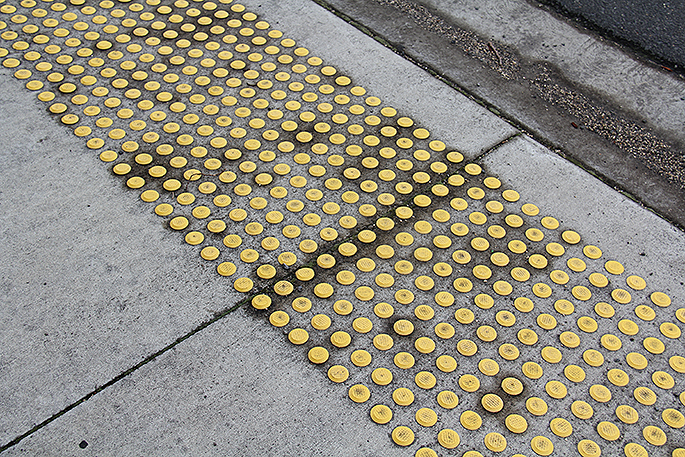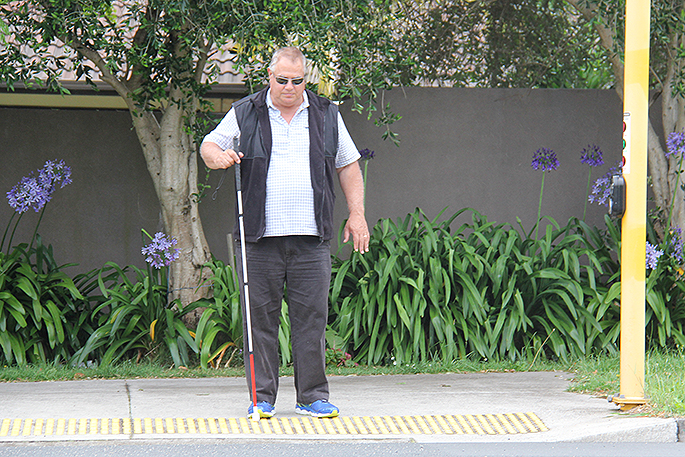All over our city we have yellow dots at pedestrian crossings. Why? Why are they yellow? Why are they raised?
Maybe it's for Pokémon GO players warning their feet that there's a road crossing ahead? I went to find out.
Today is World Braille Day. Celebrated every year on January 4, it commemorates the birthday of Louis Braille. Louis is credited with inventing the Braille language which helps blind people to read as well as write.
Born in France, Louis was blinded by an accident at the age of three. He had a great yearning to be able to read and write properly, despite his disability.
An attentive kid at school, at the age of 15, he developed a set of symbols by making raised dots on a piece of paper. The dots could be easily felt by hand, thus enabling even the blind to feel them and hence, read and write.
Louis's work was not only confined to alphabets. He was passionate about music too. Coincidentally we happen to have a Tauranga music icon who lost his sight to glaucoma in 1981 and understands the challenges of visual impairment.
John Blakeman was involved in the development of Tauranga City Council's Disability Strategy Implementation Plan.
"Years ago when Council was looking at laying the cobblestones," says John, "they were thinking of a strategy and had photographers walk around with us to see what were the disadvantages of walking the streets. Like sandwich boards."
Walking with staff members around the Tauranga streets, he was able to point out some of the hazards people who are vision-impaired face as pedestrians.
Improving and maintaining the accessibility of all council managed footpaths resulted in the introduction of Tactile Ground Surface Indicators.
 Tactile ground surface indicators.
Tactile ground surface indicators.
This includes implementation of the RTS14 Guidelines for facilities for blind and vision-impaired pedestrians – which covers the indicators.
Located at pedestrian crossings these raised dots provide a tool for the visually impaired to line up their feet and therefore their direction in order to cross the road safely.
They are bright yellow as that is a colour that can be seen by those who still have some range of vision.
"Not all the crossings in the inner city are controlled crossings," says John.
"You can come up to them using a cane and hear the different noise as it comes away from the different tiles. And you can feel with your feet. If it's not a controlled crossing you listen for vehicles stopping and then cross. If it's a controlled crossing then you find a centre place on the tactiles."
The tactile paving is not Braille as such but a system to assist pedestrians who are blind or visually impaired.
The crossings also have large round buttons and a loud repeated beeping noise that enables the pedestrian to activate the crossing to stop traffic and listen for the beep on the other side of the road.
Where this can be confusing to someone who can't see is the top of Devonport Road where all four buzzers beep at the same time providing diagonal crossing that's helpful for everyone except those without sight.
Tauranga City Council's disability strategy: http://econtent.tauranga.govt.nz/data/documents/strategies/files/disability_strategy.pdf
NZTA's RTS14: http://www.nzta.govt.nz/assets/resources/road-traffic-standards/docs/rts-14.pdf



1 comment
So not to be driven on??
Posted on 04-01-2017 15:32 | By Shocking!
So there are loads of these out Papamoa way in the new subdivisions.... but there is an interesting section I've seen on The Boulevard Rd in Golden Sands. These yellow dots are on the road, indicating it is a pedestrian crossing, but apparently cars are allowed to drive through here also to make a u-turn on this road?
Leave a Comment
You must be logged in to make a comment.